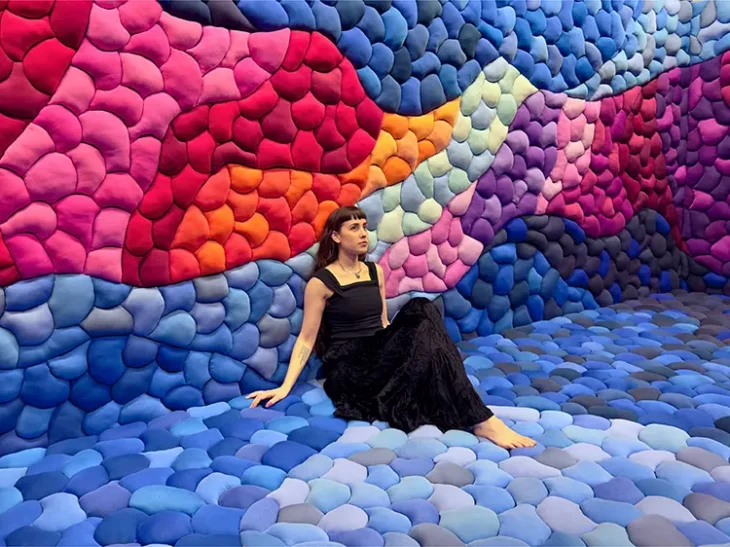
Internationally exhibited and widely celebrated for her innovative approach to sculptural and fiber art, Sienna Martz stands at the forefront of contemporary sustainable art-making. Represented by VFA Gallery in New York, Martz is known for transforming reclaimed materials and plant-based fibers into immersive, tactile installations that explore the complex relationship between humanity and nature. Her works have appeared in major cities from Seoul to Berlin, earning her features in Architectural Digest and Elle Decor, as well as a place in prominent collections worldwide. In 2024, Martz was named Sculptor of the Year by Singulart, a testament to her unique vision and growing influence.
In this conversation for DSCENE Magazine, Editor in Chief Zarko Davinic discusses Martz’s creative process, her commitment to environmental balance, and the evolving narratives woven throughout her art.
Your work beautifully blends sculptural form with textile techniques and reclaimed materials. What initially drew you to fiber art and the use of organic, sustainable materials in your practice? – In the early stages of developing my artistic practice, I experimented with various mediums, including wood, metal, ceramic, and printmaking. However, I struggled to connect with these materials and to use them effectively to express my artistic vision. Everything changed when I was introduced to fibers. I found inspiration in the soft and versatile nature of fiber arts, its rich history intertwined with human existence, and the opportunities it provided for experimentation and exploration. As I immersed myself in this art form, I began to align my ethical values surrounding veganism with my work, committing to using only plant fibers, sustainable alternatives, and avoiding any animal-derived textiles.
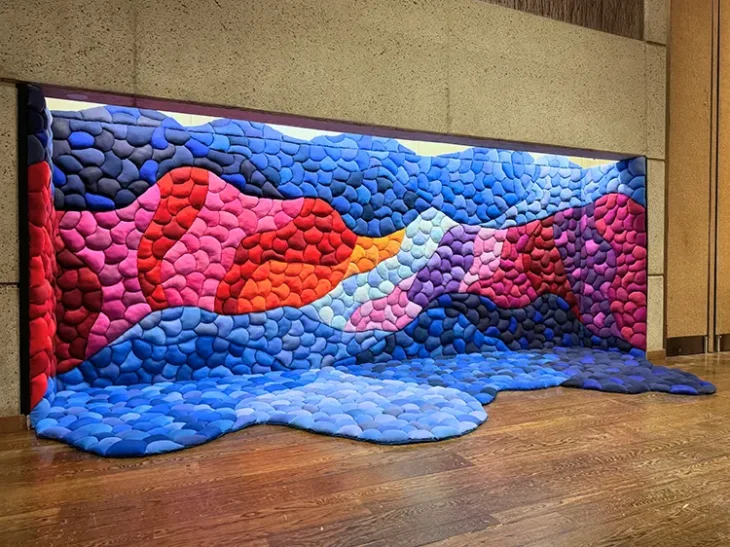
Environmental balance and tactile storytelling are central to your art. Can you share how your reverence for nature shapes your creative process and the narratives within your installations? – I am deeply fascinated by irregular movement, inconsistent edges, and repetitive shapes, which often influence my work. Similar to nature, I harness the transformative power of replicating a single form to create my sculptural pieces. Through building, layering, and structuring, I transform my work into something unexpected and intriguing, resulting in whimsical and vibrant art pieces that can be seen as new species brought to life. The dialogue between myself and the materials is unique to each piece; however, one constant remains: the meditative experience that arises from the repetitive nature of my processes.
BROWSE LATEST ART FEATURES ON DSCENE
You’ve exhibited internationally in cities like Seoul, Berlin, and New York. How have these diverse cultural contexts influenced your artistic vision or approach? – The rich history of fiber art, which links ancient practices from around the world with contemporary innovations, greatly inspires my work. By drawing on diverse cultural contexts, I often connect my practice to ancient storytelling, cultural narratives, and emotional expression. This connection provides me with a platform to help ignite revolutions in the realm of sustainability.
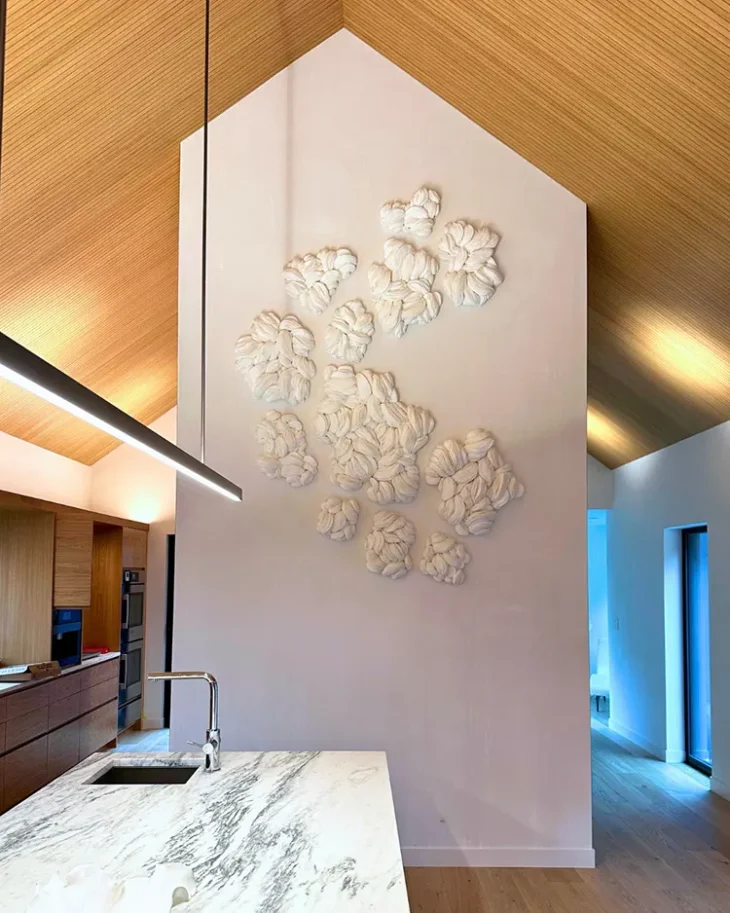
Your sculptures often invite viewers to engage with materiality and emotion. How do you hope audiences experience or interpret your work on a sensory and emotional level? – I hope that viewers will connect with the playful and vibrant energy my art often embodies, reflecting the diverse nature of fiber arts and the sensory experiences that this medium inspires. Additionally, when they learn about my sustainable practices and gentle activism, I hope they will reimagine the role of art in society. I want my work to be seen not just as an object of beauty, but as a catalyst for cultural transformation and sustainable thinking.
You’ve been featured in leading publications such as Architectural Digest and Elle Decor, and your work is part of collections worldwide. How has this recognition impacted your career and your approach to new projects? – The exposure I have received has been immense, leading to increased recognition, opportunities, and credibility. It has allowed a wider audience to experience my art, inspired collectors and institutions to invest in my work, and provided me with a platform to express my concerns and optimism about pressing environmental issues, including the climate crisis, animal agriculture, and the annual production of 92 million tons of textile waste. This exposure has further fueled my determination to enhance the sustainability initiatives within my art practice, and I hope to inspire other creatives to adopt a more environmentally conscious approach.
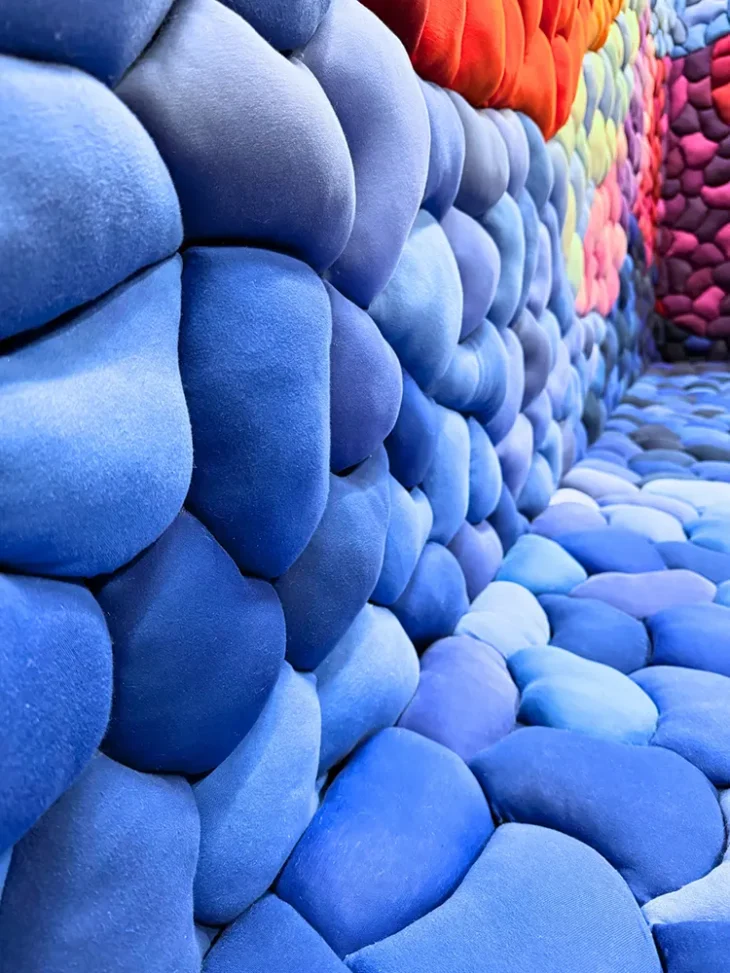
In 2024, you were named Sculptor of the Year by Singulart. What does this accolade mean to you, and how do you see it influencing your future direction as an artist? – Fiber arts have played a fundamental role in human survival and creativity for thousands of years, with some archaeological theories suggesting that textile technologies may have originated as early as 1.8 million years ago. However, due to societal perceptions and gender biases, fiber arts have often been categorized as a “women’s craft” throughout history, leading to its devaluation as an art form. Being named Sculptor of the Year by Singulart felt like a significant victory, not only for my personal artistic journey but also for the entire art form and for those who have worked to have fibers accepted in the contemporary art world. This award reassured me that I am on the right path and that others, like myself, are helping fibers evolve beyond mere craft and functionality.
Your pieces often involve intricate weaving and the use of thread and fabric. Can you elaborate on your technical process and any favorite techniques or materials you return to? – My artistic process of transforming fibers into sculptural pieces involves a combination of systematic decision-making and intuitive play. Similar to nature, my art is created through time-intensive processes that include repetitive shapes and movements. I often begin with a particular process or material that I want to explore, leading to an unpredictably exciting piece at the end of its creation. The interplay between materials becomes a vital aspect of my work as I tap into my intuition. By allowing only a certain degree of control over the manipulation of materials, I enjoy watching their natural reactions to various processes unfold.
Alternatively, I sometimes create exact mock-ups of my intended designs, especially for bespoke pieces, and carry that vision through from start to finish. This approach to art-making is incredibly satisfying as well.
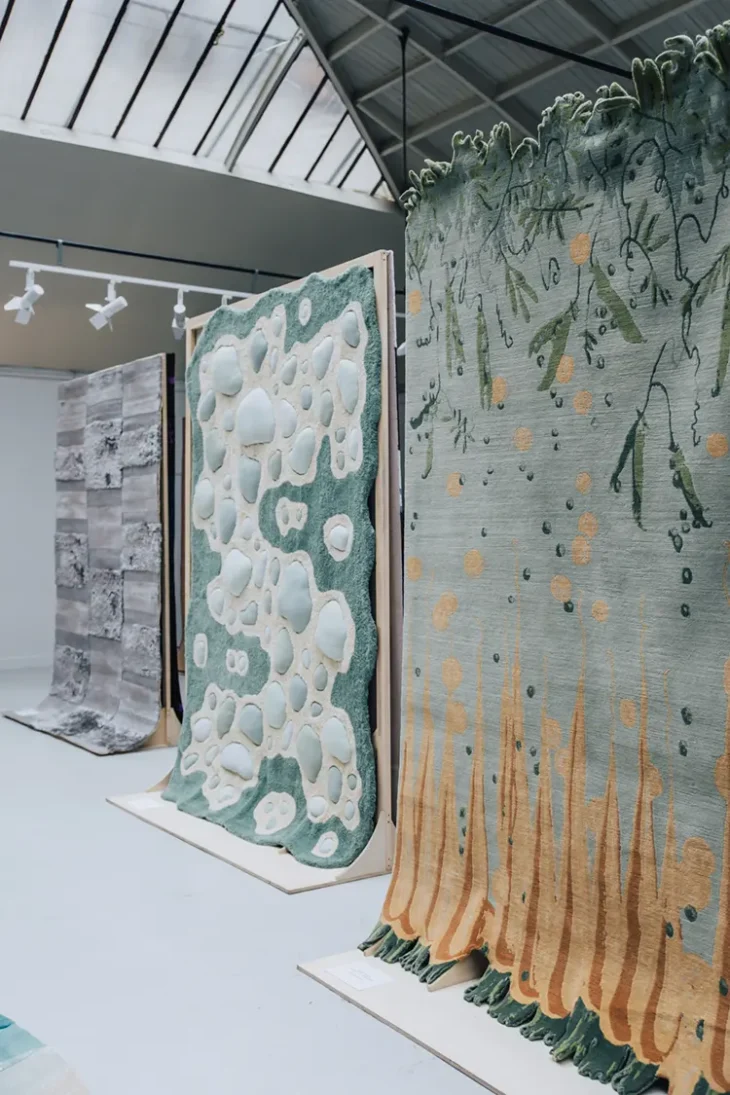
One material I frequently return to in my current practice is secondhand clothing. This choice allows me to demonstrate my commitment to environmental integrity while making a powerful statement about community and togetherness. With over 100 billion clothing garments produced annually and enough existing clothing to dress the next six generations, secondhand clothing represents an abundant resource that often ends up in landfills. By sourcing from this material instead of purchasing new fabric, I can give these discarded items a new life as art.
Would you ever consider collaborating with a fashion designer, or perhaps developing a fashion collection yourself? What possibilities or challenges would excite you about such a crossover? – Absolutely! I’m currently in discussions with several designers and brands about creating artwork using their deadstock and fabric scraps. Most recently, I collaborated with Swedish Stockings to produce a collection of artworks made from discarded stockings from their recycling program. Earlier in my career, I often created wearable art, and I would love to explore that avenue again someday.
As a female artist working in contemporary sculpture and fiber art, what unique challenges or opportunities have you encountered in the art world? – I am aware that I have likely missed opportunities over the years due to my gender, even if I am not fully conscious of those losses. However, as a fiber artist working in a predominantly female sector of the art industry, I have a unique perspective. Here, my gender can both uplift and inspire opportunities in ways that perhaps other art forms don’t nurture in the same way.
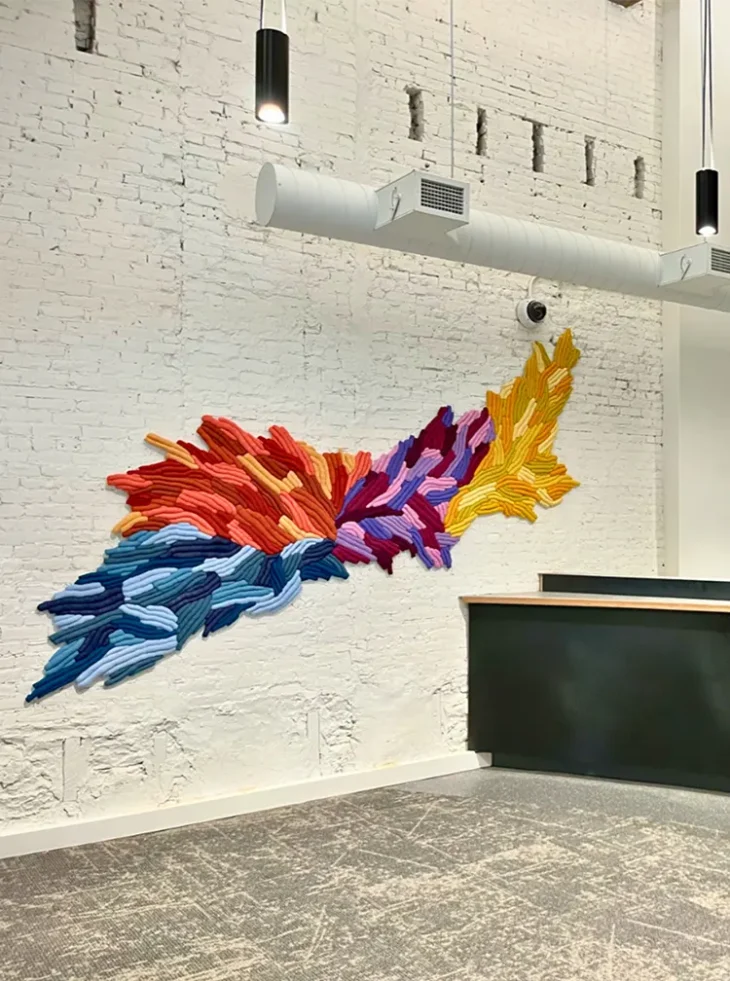
In your view, what are the biggest barriers women face in the art and design industries today, and how have you navigated them throughout your career? – It is truly difficult for me to comprehend that, in this day and age, women are still underrepresented and face gender bias in art valuation. Many barriers prevent female artists from advancing in their careers. However, as history has shown, these challenges only make women stronger, more resilient, and more innovative in creating opportunities for themselves and other women around the world. I actively support and uplift female artists in my life and often prefer working with galleries, art institutions, consulting firms, and other organizations that are women-owned. I strongly believe that community, perseverance, and advocacy for change are essential to overcoming gender biases in the art industry.
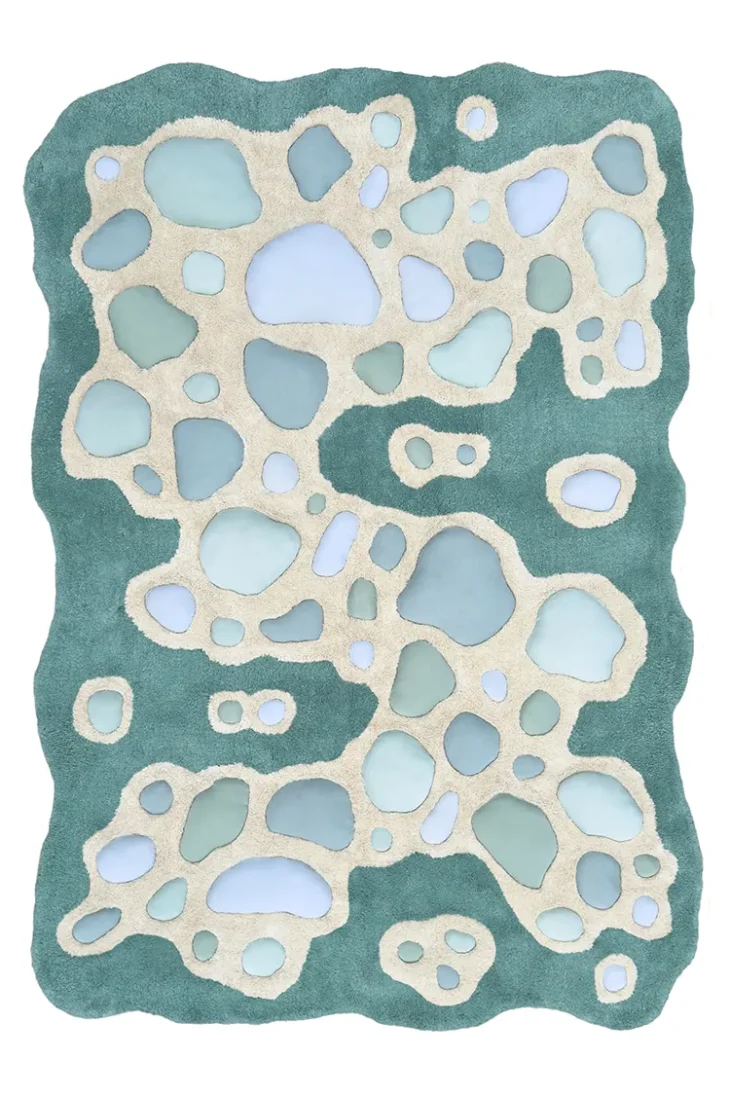
What advice would you offer to emerging female artists and designers hoping to forge their own path in sculpture, fiber art, or sustainable creative practices? – One of my strongest pieces of advice for emerging female artists and designers is to avoid seeing others as competition. Instead, view them as allies who can uplift, guide, and support each other. By removing the pressure to compete, you open yourself up to new perspectives and techniques, allowing your practice to grow from a more genuine and authentic place. In a time of significant division among people, there is immense power in uniting to pave the way for a more inclusive future full of opportunities.
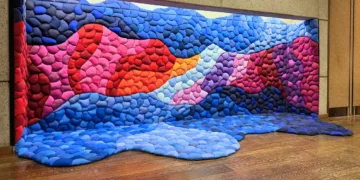














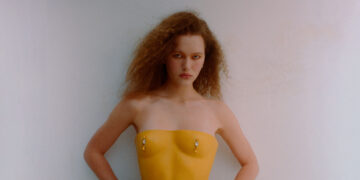
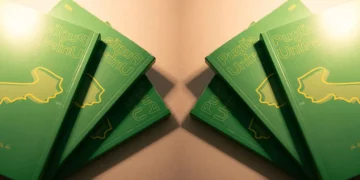
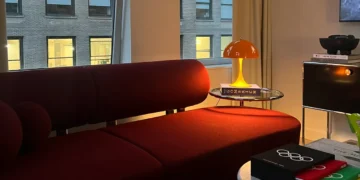
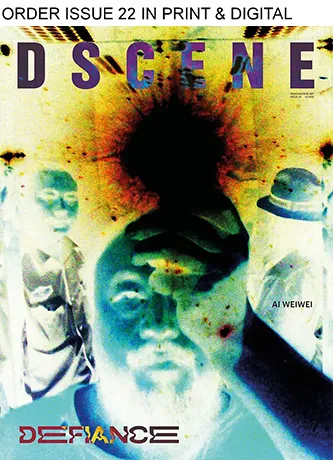

interesting